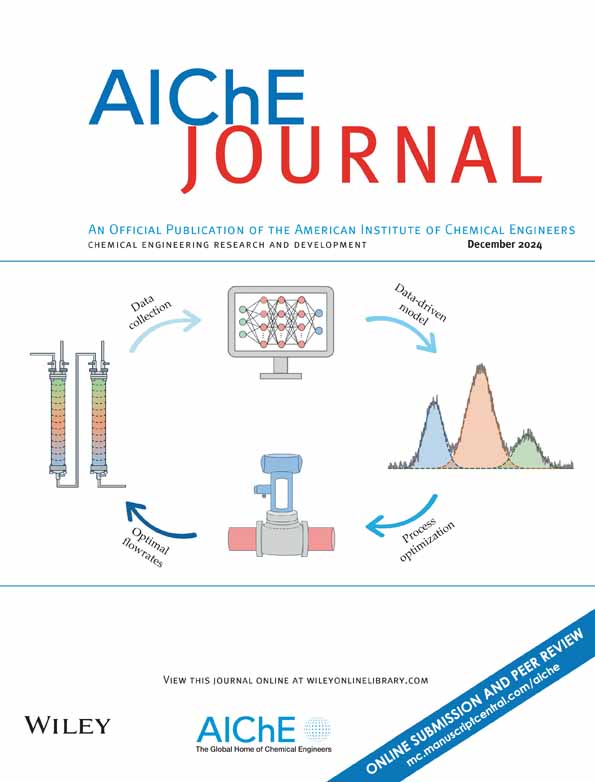Kinetic and mechanism study of removing strontium ions from aqueous solution by graphene oxide/hydroxyapatite composites
IF 3.5
3区 工程技术
Q2 ENGINEERING, CHEMICAL
引用次数: 0
Abstract
Strontium (Sr) is a primary radioactive substance that should be prioritized for removal from nuclear wastewater and hospital radioactive water. An efficient graphene oxide/hydroxyapatite adsorbent (GO/HAp) was investigated for the rapid adsorption of Sr2+. Herein, a kinetic and mechanism study of this system was implemented, and the morphology and structure of as-prepared composites were characterized by scanning electron microscopy (SEM), transmission electron microscopy (TEM), X-ray diffraction (XRD), Raman, Fourier transforming infrared spectroscopy (FT-IR), X-ray photoelectron spectroscopy (XPS) and thermogravimetric analysis (TGA). The adsorption kinetics and equilibrium data followed the pseudo-second-order kinetic model and Freundlich isotherm model. Sr2+ adsorption was further analyzed by adjusting the HAp ratio, adsorbent dosage, initial Sr2+ concentration, solution pH, Ca source, and coexisting ions. The removal efficiency and adsorption capacity were up to 100%, about 109.39 mg/g. The immobilization of Sr2+ was attributed to synergizing the adsorption characteristics of GO and HAp. Due to the remarkable adsorption performance, GO/HAp composites show great potential for practical applications in the treatment of nuclide-containing wastewater.氧化石墨烯/羟基磷灰石复合材料去除水溶液中锶离子的动力学及机理研究
锶(Sr)是一种初级放射性物质,应优先从核废水和医院放射性水中去除。研究了一种高效的氧化石墨烯/羟基磷灰石吸附剂(GO/HAp)对Sr2+的快速吸附。采用扫描电镜(SEM)、透射电镜(TEM)、x射线衍射(XRD)、拉曼光谱(Raman)、傅里叶变换红外光谱(FT-IR)、x射线光电子能谱(XPS)和热重分析(TGA)对制备的复合材料的形貌和结构进行了表征。吸附动力学和平衡数据符合拟二级动力学模型和Freundlich等温线模型。通过调整HAp比、吸附剂投加量、Sr2+初始浓度、溶液pH、Ca源和共存离子,进一步分析了Sr2+的吸附性能。去除率达100%,吸附量约为109.39 mg/g。Sr2+的固定化作用归因于氧化石墨烯和HAp的协同吸附特性。由于其优异的吸附性能,氧化石墨烯/羟基磷灰石复合材料在处理含核素废水方面具有很大的实际应用潜力。
本文章由计算机程序翻译,如有差异,请以英文原文为准。
求助全文
约1分钟内获得全文
求助全文
来源期刊

AIChE Journal
工程技术-工程:化工
CiteScore
7.10
自引率
10.80%
发文量
411
审稿时长
3.6 months
期刊介绍:
The AIChE Journal is the premier research monthly in chemical engineering and related fields. This peer-reviewed and broad-based journal reports on the most important and latest technological advances in core areas of chemical engineering as well as in other relevant engineering disciplines. To keep abreast with the progressive outlook of the profession, the Journal has been expanding the scope of its editorial contents to include such fast developing areas as biotechnology, electrochemical engineering, and environmental engineering.
The AIChE Journal is indeed the global communications vehicle for the world-renowned researchers to exchange top-notch research findings with one another. Subscribing to the AIChE Journal is like having immediate access to nine topical journals in the field.
Articles are categorized according to the following topical areas:
Biomolecular Engineering, Bioengineering, Biochemicals, Biofuels, and Food
Inorganic Materials: Synthesis and Processing
Particle Technology and Fluidization
Process Systems Engineering
Reaction Engineering, Kinetics and Catalysis
Separations: Materials, Devices and Processes
Soft Materials: Synthesis, Processing and Products
Thermodynamics and Molecular-Scale Phenomena
Transport Phenomena and Fluid Mechanics.
 求助内容:
求助内容: 应助结果提醒方式:
应助结果提醒方式:


